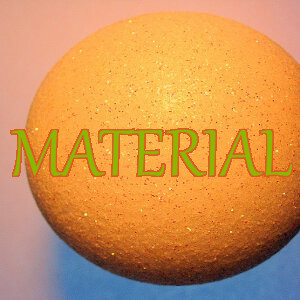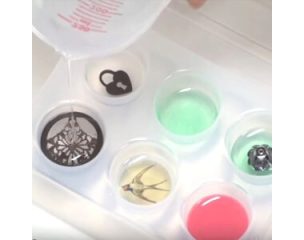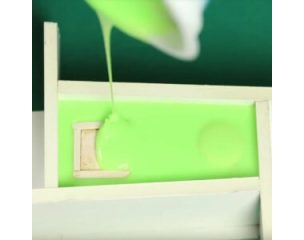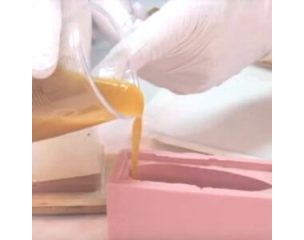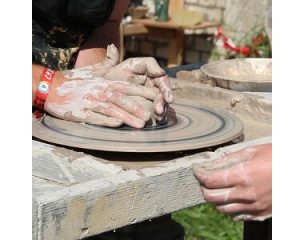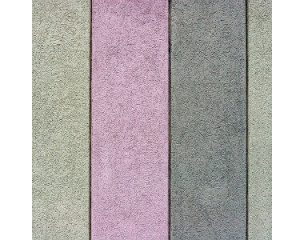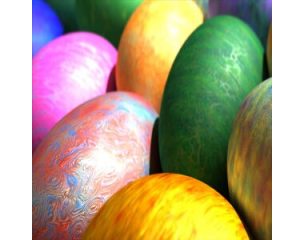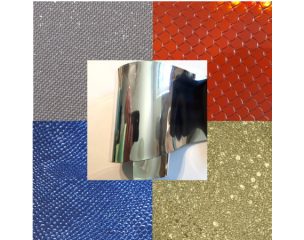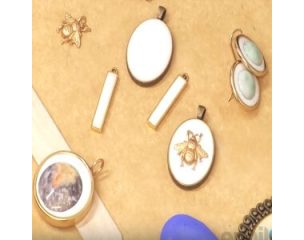Casting Materials
The epoxy resin belongs to thermosetting resins with excellent mechanical properties and chemical resistance.
The epoxy resin consists of two components:
- Epoxy base
- Epoxi hardener
It has a much higher mechanical strength compared to polyurethane resins. But in contrary its curing time is much longer. Normally, it takes 1-2 days after that you can demould it.
It is typically used for:
- Casting of spare parts
- Composite material as matrix
- Coating of surfaces,
- Bonding,
- Mouldmaking and
- Nowadays it’s highly populaire for preparing home made jewelery
Scroll down to the bottom of the page for more information on epoxy resin prices, safety precautions, storage suggestions, usable additives and compatible materials, and more.
Silicone rubbers can be widely used for mold making.
Perhaps their most important feature is that they do not adhere (stick) to most of the materials therefore they are excellent for casting of products and prototypes.
They are available in transparent appearance which allows the casting process to be controlled visually. In other cases, also the color version can be used.
The following main considerations should be taken into account when selecting silicone rubbers.
- Hardness (Shore A)
- Break elongation
- Biocompatibility for medical application or food industry
- Thermal resistance for casting of low temperature alloy
Scroll down to the bottom of the page for more information on types of silicones, usable additives, storage suggestions and about the selection of the apropriate type of silicone.
Polyurethane resins are thermoplastic materials.
Polyurethane casting resins can be widely used for prototyping, small series production, modeling, reproduction of mock-ups etc.
Their technical properties can be varied within relatively wide range. That's why you can produce different mechanical elements from them or even you can replace broken plastic parts or check the assemblability of a newly designed product or maybe simply visualize the shape in live.
In most cases the polyurethane resin consists of two components:
- polyol
- isocyanate
As soon as the components are properly mixed together and casted in the mould, it takes approximately an hour for hardening. So you can demould the tool without damaging the casted part.
However, you will often have to wait several days until the item reaches the final hardness.
The urethane resins can also be categorised according to their consistency:
- Hard polyurethane, high Shore D hardness
- Polyurethane rubbers
- Polyurethane foams
Among the pottery materials, you will find hand-used materials in small packs so you can make the first steps in making ceramic or ceramic-like products.
You can even buy 2 kg of natural clay from which you can shape smaller jars, salt cellars, decorating elements by pressing them into a finished or self-made silicone mould.
Pottery materials are not only suitable for making finished products, ceramic objects.
If you build a silicone or polyurethane mould, it could serve as supporting material, a base or stressed skin. Perhaps the cheapest way is to make such elements from clay, gypsum, concrete.
Metals are one of the most important base materials for repairing and DIY. Although the use of plastics is becoming increasingly widespread, some of the metal characteristics are essential.
Eg. high strength and hardness compared to plastics.
Most metals have good thermal conductivity, which is often fundamental for certain product development.
Bellow you find materials that are not classified as mould-making materials or casting resins, but can be used as useful auxilliary materials for mould-making and casting.
For example,
adhesives,
thixotropic agents,
mold release agents, etc.
Colorss are used in most cases for decorative purposes. And we want our products to be different to those of our competitors.
Besides this we also apply different colors for different mould parts simply because we want to differentiate them or even to ease them to each other visually etc..
You can decorate casting resins in two ways:
- To utilize pigments that are mixed with the resin together in the material itself before casting or
- We can paint the already hardened casted part as well coloring its surface. Polyurethane is generally good to paint.
However the material of the color has to be selected accordingly which should be compatible with the polyurethane itself.
Sometimes there is a need for transparent casting polyurethane or moulding material. In other cases we need to reproduce exactly the same color for that we suggest to use transparent resin with pigment measured precisely.
Otherwise please take into account the initial color of the resin as well. Colors may have also functional purposes, e.g. the distinctiveness of the components.
Additionally, colors are often used for marking tools and may also be useful for separating certain phases or parts during the preparation process of the mould.
It is important that the resins be dyed with the appropriate chemically compatible pigments.
Here you find decorating materials that are compatible to those resin you can buy in this webshop.
That means that these decoration elements can be sticked, coat and cast to epoxy and polyurethane resins so that they do not obstacle the polymerisation and also keep theirs original textures and colors.
Hereby you find materials that are not classified elsewhere.
One of the reasons for this is the specialty of the material, e.g. the art clay being well-suited for decoration.
It may also happen that materials are relatively rarely demanded and therefore are not classified in a separate category.





